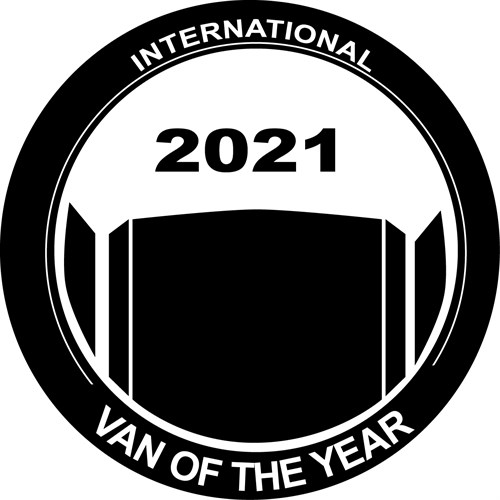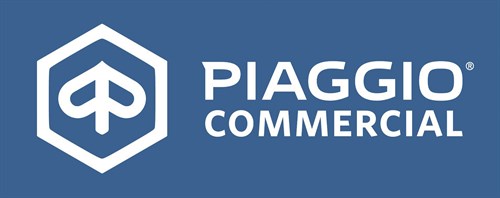To many, the new Renault Kangoo and Express might seem like something of a doubling up of products in the range. After all, how many small vans does one portfolio need? Clearly, Renault thinks that the Kangoo needs a partner. Ford can offer you the Connect, Courier and Fiesta, so why not add a middle van between the Kangoo and Renault Zoe? But is the Renault Express a step too far?
For the UK, it would seem so, especially as the word cannibalisation cropped up more than once in conversation with senior Renault executives who want to protect the Kangoo’s healthy sales by not undercutting it with their own cheaper rival. The story in Europe, where the Express will be widely available, is a little different, which is where things get interesting.
In Europe, the clever new features like the Open Sesame wide-loading side door and the deeper, more usable glovebox make the Kangoo stand out above the Express. A new all-electric Kangoo (due in mid-2022 in Europe and possibly called Kangoo E-Tech) adds more to the proposition, along with a Maxi long-wheelbase option (arriving after the EV). However, customers who simply want a petrol or diesel van that can transport up to 3.7m3 would surely opt for the Renault Express over its more expensive sibling.
Like the Renault 5, which the previously-badged Renault Express was based upon, the new model is a car platform at heart, built out of the Renault Group’s facility in Tangier, Morocco, which is home to a world of Dacia products and a global B-segment platform. Therein lies the proposition and potential problem as the Express is a van built for an entirely different market, where Dacias dominate and from a low-cost base. With the Kangoo adopting a C-segment chassis, used on the Renault Scenic, it is by default a more premium offering for customers looking for more advanced features like the rear-view assist camera or autonomous emergency braking.
But Renault sees the conflict as an opportunity to increase its slice of the pie. “Initially we planned to launch the two [vans] not exactly at the same time, but a little bit further apart with the Express van first and later the Kangoo. But now we are launching them at the same moment, and with two [vans] I hope we will extend our market share,” explains Phillipe Caillette, Renault small van programme director.
“The two vehicles are complimentary. After Covid, if people are looking at best TCO then maybe they will orientate their purchase to the Express van. If you want an electric van, the Kangoo is the answer. We are still selling the current Kangoo EV, because the current Kangoo ZE matches the customer expectations in 2021. For the next generation we are following our strategy, which is why we don’t want to have an electric version of the Express because we didn’t want to have cannibalisation. Sometimes people will recognise the value of a Kangoo van as a second-hand van because it will have the Open Sesame doors. If the market wants a simple van we have a simple van too,” Caillette explains.
While some confusion may initially arise over the Express being seen as a cut-price Kangoo, its arrival does make more sense to the Renault brand and more specifically to its network, adding a new van to entice more customers while also removing the Dacia Dokker (the model it replaces) from a brand that doesn’t specialise in LCVs.
Looking at the development more broadly, Louis Morasse, Renault LCV design director, believes they have now created a very coherent range.
“So it is two platforms aligned with the brand identity, with the same face in order to have a family. Following what we did on the Master two years ago and also on the Trafic, we worked a lot on the two small vans to make sure they are complimentary – little brother and big brother,” he says.
“On the interior trim, when you are in both you are in a Renault LCV area, with the same [looking] steering wheel the same multimedia system. But it is a family with two specific customer expectations. The Express is the entry-level version and the Kangoo is the higher-spec version with its commonality in design. The seats look the same but they are not the same. The mirrors look the same, but they are not,” Morasse continues.

It’s not only about visual changes or perceived similarities either: the entire Renault range is preparing itself for further developments in alternative fuels. Renault’s long-established pedigree as Europe’s biggest supplier of electric LCVs will invariably continue to be challenged as more manufacturers come on-stream with zero-emission offerings of their own, leading Renault to look towards fuel cell technology as a way of once again differentiating itself from the competition.
In addition, there have been some big changes across the commercial vehicle landscape – most notably with the incorporation of the Stellantis group, which will see joint-venture Vauxhall/Opel products as well as Fiat models currently manufactured by Renault inevitably switch to Stellantis’ own platforms. Renault knows that it must maintain volume in other ways in order to keep its LCV production efficient.
“Renault’s ‘Renaulution’ [strategy plan] has several stages and at each stage we are completely involved as the LCV business,” says Mark Sutcliffe (pictured above), senior vice-president of the Light Commercial Vehicle Business Unit for the Renault-Nissan-Mitsubishi Alliance, the man now in charge of van strategy and development for all three brands, having previously been responsible for industrial strategy and supply chain management within the alliance.
“Today, with the release of the vehicles, we are really adding customer value and features that will benefit professional users. We’re no longer chasing market share,” he says.
A renewed focus will be placed on technology development, working to the strengths with a “joint approach to high-impact projects”.
“We talk a lot about energy, technology and about the future eco-systems and infrastructure,” Sutcliffe continues. “In the LCV business, we are already the leader of electric vans with the Kangoo, we’re also renewing the Master ZE and we’ve talked a little about hydrogen. That’s a very important addition to the strategy and it’s not only the vehicles, but we’re also bringing the environment, assisting and supporting our customers through the journey. We are very much involved in zero-emission mobility. Acceptance in the van space takes time but it is coming.
“In the second half of the decade we will see a vast expansion of EV usage. We’re preparing all of our vehicles with electrification, and there’s a possibility it will come with a skateboard approach, but that’s some way into the future,” he adds.
On the subject of partnerships and future collaborations, Sutcliffe is optimistic that the new products will find their feet with badges both in and out of the alliance, pointing to the new Mitsubishi Express van (based on the Trafic and sold in Australia and New Zealand) as an example of a new partnership beginning as others are due to end.
“We’ve been very successful with our partnership approach for many years, we continue to work with partners on all of our vehicles and continue to manufacture other versions of our vehicles for our partners in Renault facilities. We expect to be continuing our relationship with Opel until the end of 2022, but it will move to Stellantis in the future.
“We’re always open to partnerships, with a Mitsubishi medium van based on the Trafic [platform] manufactured in our Sandouville plant, likewise for our other vehicles for partners, whether it is the Maubeuge Kangoo or the Master from Batilly. We intend to continue to do that and are always open to such discussions because we are very proud of the product we have and we believe it can be utilised by other partners. There’s nothing specific to announce but we will always be developing our partner relationships on our vehicles,” Sutcliffe concludes.
While the Renaulution strategy encompasses everything from a new logo (likely to appear on 2022 UK Kangoo vans) through to a zero-CO2 footprint in Europe by 2050, the way in which Renault will get there is clearly open to any and all combinations going forward. Hydrogen will make up the longer-term strategy, but internal combustion engine products will support battery electric vehicles in the meantime as they gain market share. The question remains whether there will be any hybridisation, but much like the introduction of the Express van, going forward don’t be surprised to see Renault expand its portfolio and that of its alliance partners with models, powertrains and platforms to further widen its range of customers.
The door of deception
It was billed as the Renault Motor Show, an online preview of some je ne sais quoi from the French manufacturer, but what we got was the Renault no-show – not through any technical difficulties or for a lack of trying.
The Express and Kangoo look smart and sophisticated, but the highlight of the presentation was a big reveal of the ‘Open Sesame’ door. Voila! Long enough to fit Big Bird in lengthways, the B-pillarless design applies typically French avantgarde thinking to a problem few realised we had. By way of picturing a Parisian street scene with nose to tail parking, a wider side access door on the right-hand side is shown to make a lot of sense.
Unfortunately, the cost of shifting left to right (for the steering) and right to left (the door) makes it unfeasible for the UK. Add to this the fact that the ingenious glovebox tray, which is large enough to store a hard hat in, won’t make the switch either and you begin to get an unnerving sense of déjà vu.
Insult added to injustice (rather than injury) comes in the form of no low-budget Express van for our shores either. C’est la vie, I guess, but a glimmer of hope was that this new version of the Dacia Dokker (predecessor of the new Renault Express), which was easily the crème-de-la-crème of vans you’ve never been able to buy in the UK, might finally be available. Yet, hopes of a Renault-badged version were also dashed, which can only leave me to say that as far as the Renault Motor Show is concerned, us Roast Beefs are left out of the feast. Sacre Bleu!
George Barrow is the UK judge for the International Van of the Year, the prestigious prize awarded by leading European LCV journalists
Sponsored by:






